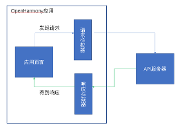netty系列之:netty中的核心MessageToByte编码器
简介
之前的文章中,我们讲解了netty中从一个message转换成为另外一个message的框架叫做MessageToMessage编码器。但是message to message只考虑了channel中消息在处理过程中的转换,但是我们知道channel中最终传输的数据一定是ByteBuf,所以我们还需要一个message和ByteBuf相互转换的框架,这个框架就叫做MessageToByte。
注意,这里的byte指的是ByteBuf而不是byte这个字节类型。
MessageToByte框架简介
为了方便扩展和用户的自定义,netty封装了一套MessageToByte框架,这个框架中有三个核心的类,分别是MessageToByteEncoder,ByteToMessageDecoder和ByteToMessageCodec。
我们分别看一下这三个核心类的定义:
public abstract class MessageToByteEncoder<I> extends ChannelOutboundHandlerAdapter
public abstract class ByteToMessageDecoder extends ChannelInboundHandlerAdapter
public abstract class ByteToMessageCodec<I> extends ChannelDuplexHandler
这三个类分别继承自ChannelOutboundHandlerAdapter,ChannelInboundHandlerAdapter和ChannelDuplexHandler,分别表示的是向channel中写消息,从channel中读消息和一个向channel中读写消息的双向操作。
这三个类都是抽象类,接下来我们会详细分析这三个类的具体实现逻辑。
MessageToByteEncoder
先来看encoder,如果你对比MessageToByteEncoder和MessageToMessageEncoder的源码实现,可以发现他们有诸多相似之处。
首先在MessageToByteEncoder中定义了一个用作消息类型匹配的TypeParameterMatcher。
这个matcher用来匹配收到的消息类型,如果类型匹配则进行消息的转换操作,否则直接将消息写入channel中。
和MessageToMessageEncoder不同的是,MessageToByteEncoder多了一个preferDirect字段,这个字段表示消息转换成为ByteBuf的时候是使用diret Buf还是heap Buf。
这个字段的使用情况如下:
protected ByteBuf allocateBuffer(ChannelHandlerContext ctx, @SuppressWarnings("unused") I msg,
boolean preferDirect) throws Exception {
if (preferDirect) {
return ctx.alloc().ioBuffer();
} else {
return ctx.alloc().heapBuffer();
}
}
最后来看一下它的核心方法write:
public void write(ChannelHandlerContext ctx, Object msg, ChannelPromise promise) throws Exception {
ByteBuf buf = null;
try {
if (acceptOutboundMessage(msg)) {
@SuppressWarnings("unchecked")
I cast = (I) msg;
buf = allocateBuffer(ctx, cast, preferDirect);
try {
encode(ctx, cast, buf);
} finally {
ReferenceCountUtil.release(cast);
}
if (buf.isReadable()) {
ctx.write(buf, promise);
} else {
buf.release();
ctx.write(Unpooled.EMPTY_BUFFER, promise);
}
buf = null;
} else {
ctx.write(msg, promise);
}
} catch (EncoderException e) {
throw e;
} catch (Throwable e) {
throw new EncoderException(e);
} finally {
if (buf != null) {
buf.release();
}
}
}
上面我们已经提到了,write方法首先通过matcher来判断是否是要接受的消息类型,如果是的话就调用encode方法,将消息对象转换成为ByteBuf,如果不是,则直接将消息写入channel中。
和MessageToMessageEncoder不同的是,encode方法需要传入一个ByteBuf对象,而不是CodecOutputList。
MessageToByteEncoder有一个需要实现的抽象方法encode如下,
protected abstract void encode(ChannelHandlerContext ctx, I msg, ByteBuf out) throws Exception;
ByteToMessageDecoder
ByteToMessageDecoder用来将channel中的ByteBuf消息转换成为特定的消息类型,其中Decoder中最重要的方法就是好channelRead方法,如下所示:
public void channelRead(ChannelHandlerContext ctx, Object msg) throws Exception {
if (msg instanceof ByteBuf) {
CodecOutputList out = CodecOutputList.newInstance();
try {
first = cumulation == null;
cumulation = cumulator.cumulate(ctx.alloc(),
first ? Unpooled.EMPTY_BUFFER : cumulation, (ByteBuf) msg);
callDecode(ctx, cumulation, out);
} catch (DecoderException e) {
throw e;
} catch (Exception e) {
throw new DecoderException(e);
} finally {
try {
if (cumulation != null && !cumulation.isReadable()) {
numReads = 0;
cumulation.release();
cumulation = null;
} else if (++numReads >= discardAfterReads) {
numReads = 0;
discardSomeReadBytes();
}
int size = out.size();
firedChannelRead |= out.insertSinceRecycled();
fireChannelRead(ctx, out, size);
} finally {
out.recycle();
}
}
} else {
ctx.fireChannelRead(msg);
}
}
channelRead接收要进行消息读取的Object对象,因为这里只接受ByteBuf消息,所以在方法内部调用了msg instanceof ByteBuf来判断消息的类型,如果不是ByteBuf类型的消息则不进行消息的转换。
输出的对象是CodecOutputList,在将ByteBuf转换成为CodecOutputList之后,调用fireChannelRead方法将out对象传递下去。
这里的关键就是如何将接收到的ByteBuf转换成为CodecOutputList。
转换的方法叫做callDecode,它接收一个叫做cumulation的参数,在上面的方法中,我们还看到一个和cumulation非常类似的名称叫做cumulator。那么他们两个有什么区别呢?
在ByteToMessageDecoder中cumulation是一个ByteBuf对象,而Cumulator是一个接口,这个接口定义了一个cumulate方法:
public interface Cumulator {
ByteBuf cumulate(ByteBufAllocator alloc, ByteBuf cumulation, ByteBuf in);
}
Cumulator用来将传入的ByteBuf合并成为一个新的ByteBuf。
ByteToMessageDecoder中定义了两种Cumulator,分别是MERGE_CUMULATOR和COMPOSITE_CUMULATOR。
MERGE_CUMULATOR是将传入的ByteBuf通过memory copy的方式拷贝到目标ByteBuf cumulation中。
而COMPOSITE_CUMULATOR则是将ByteBuf添加到一个 CompositeByteBuf 的结构中,并不做memory copy,因为目标的结构比较复杂,所以速度会比直接进行memory copy要慢。
用户要扩展的方法就是decode方法,用来将一个ByteBuf转换成为其他对象:
protected abstract void decode(ChannelHandlerContext ctx, ByteBuf in, List<Object> out) throws Exception;
ByteToMessageCodec
最后要介绍的类是ByteToMessageCodec,ByteToMessageCodec表示的是message和ByteBuf之间的互相转换,它里面的encoder和decoder分别就是上面讲到的MessageToByteEncoder和ByteToMessageDecoder。
用户可以继承ByteToMessageCodec来同时实现encode和decode的功能,所以需要实现encode和decode这两个方法:
protected abstract void encode(ChannelHandlerContext ctx, I msg, ByteBuf out) throws Exception;
protected abstract void decode(ChannelHandlerContext ctx, ByteBuf in, List<Object> out) throws Exception;
ByteToMessageCodec的本质就是封装了MessageToByteEncoder和ByteToMessageDecoder,然后实现了编码和解码的功能。
总结
如果想实现ByteBuf和用户自定义消息的直接转换,那么选择netty提供的上面三个编码器是一个很好的选择。
本文已收录于 http://www.flydean.com/14-0-2-netty-codec-msg-to-bytebuf/
最通俗的解读,最深刻的干货,最简洁的教程,众多你不知道的小技巧等你来发现!
欢迎关注我的公众号:「程序那些事」,懂技术,更懂你!
|
- 上一条: Fizz网关入门教程-快速聚合多接口 2022-04-21
- 下一条: 网易数帆王佰平:我的 Envoy Maintainer 之路 2022-04-21
- netty系列之:netty中的frame解码器 2022-04-28
- netty系列之:netty中各不同种类的channel详解 2022-03-16
- netty系列之:channel,ServerChannel和netty中的实现 2022-02-22
- netty系列之:netty中常用的对象编码解码器 2022-05-17
- netty系列之:在netty中处理CORS 2021-09-18










